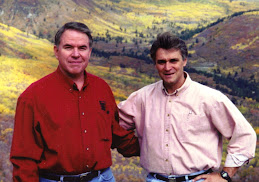
Organizational Learning Agility and Performance Support
Learning agility is becoming the defining quality of high performance organizations. It is fast becoming a core leadership competency. And it currently provides the learning industry a singular opportunity to contribute in a way and at a level we have not heretofore been privileged to do.
Learning agility is unattainable without performance support. Clearly, as you read the report, you will find there are other issues that require attention, but the heart of sustainable agility is the work of supporting performers at all five moments of need.
Throughout Bob’s and my professional careers, our industry, for the most part, has struggled to demonstrate legitimate bottom-line strategic value to their respective organizations. As such, most learning leaders simply haven’t earned the right to legitimately sit at the corporate leadership table. But today, more than ever before, we are needed at that table and we need to step into the room prepared to help lead our respective organizations into organizational learning agility.
However, to successfully walk into that room and begin the process of agility transformation, we must be absolutely prepared. Here are some suggestions to help you negotiate the whitewater rapids that lie ahead:
1. Make sure you have internalized the value proposition of organizational learning agility. The report is written to help you accomplish this. But you must take the time to authentically own this journey.
2. You need to cultivate a broader organizational leadership view. For example, you need to understand market movements and trends so you can spot the earliest signs and movements of market challenge. You need to be able to rival the strategic planning function in its ability to collect external information and signals from the outside environment. You need to be business savvy and able to go toe-to-toe with any other leader in business acumen.
3. You must be ready to lead your organization into a realistic performance support strategy that will, overtime, deliver learning agility. As you review the trends, threats, and recommendations in the research report, you will find that there is a great deal that must be done. This report can become a high-level blueprint to help you develop and rollout, over time, a sustainable strategy.
4. Don’t go this alone. We need to network as a community to help each other succeed in this journey.We need to be benchmarking our successes and sharing them with each other. The stakes are high on this one. There has never been a greater opportunity for our industry to finally deliver the value it has always been capable of providing.
5. Don’t attempt to boil the ocean. As I mentioned, there is more to this than performance support, but PS is at the heart of it all. Start there and deliver value. Know what you need to accomplish overtime and then run at it with resolve.
The path forward is exciting and challenging. It most likely won’t be easy. Rather, it will be a lot like kayaking a turbulent rapid infested river. You need to be competent and agile. Our experience with this community is you have the character and capacity to rise to this challenge. Who knows the degree to which your organization can become completely agile. Total agility may be unattainable. But a lethargic organization entrenched in views and practices that run counter to agility will, at some point, fail.
I remember watching the movie Jumanji with Robin Williams. I hated the movie – especially the part where a horde of maniac monkeys wreaked havoc in the lives of the children who were caught in this magical game where each step of the way catastrophic events were unleashed to threaten their safety and sanity. I have sometimes thought that life is a lot like the game of Jumanji. When faced with challenge, we have no alternative but to play the game through and succeed. Any other option leaves us in a state that simply isn’t acceptable. This is certainly the case with learning agility. Your organization’s survival at some point will depend upon its readiness to respond adeptly with speed. Most likely you have enormous amounts of low-hanging fruit to pick in your efforts to increase learning agility. Go for that and then don’t give up! Remember, at the heart of it all is performance support. You know how to begin this part of organizational agility transformation. As you read the research report, let us know if you have any questions or if there are specific issues you face that the report fails to take into consideration or address clearly.
Good luck! Work hard! Ask questions! Be agile!



